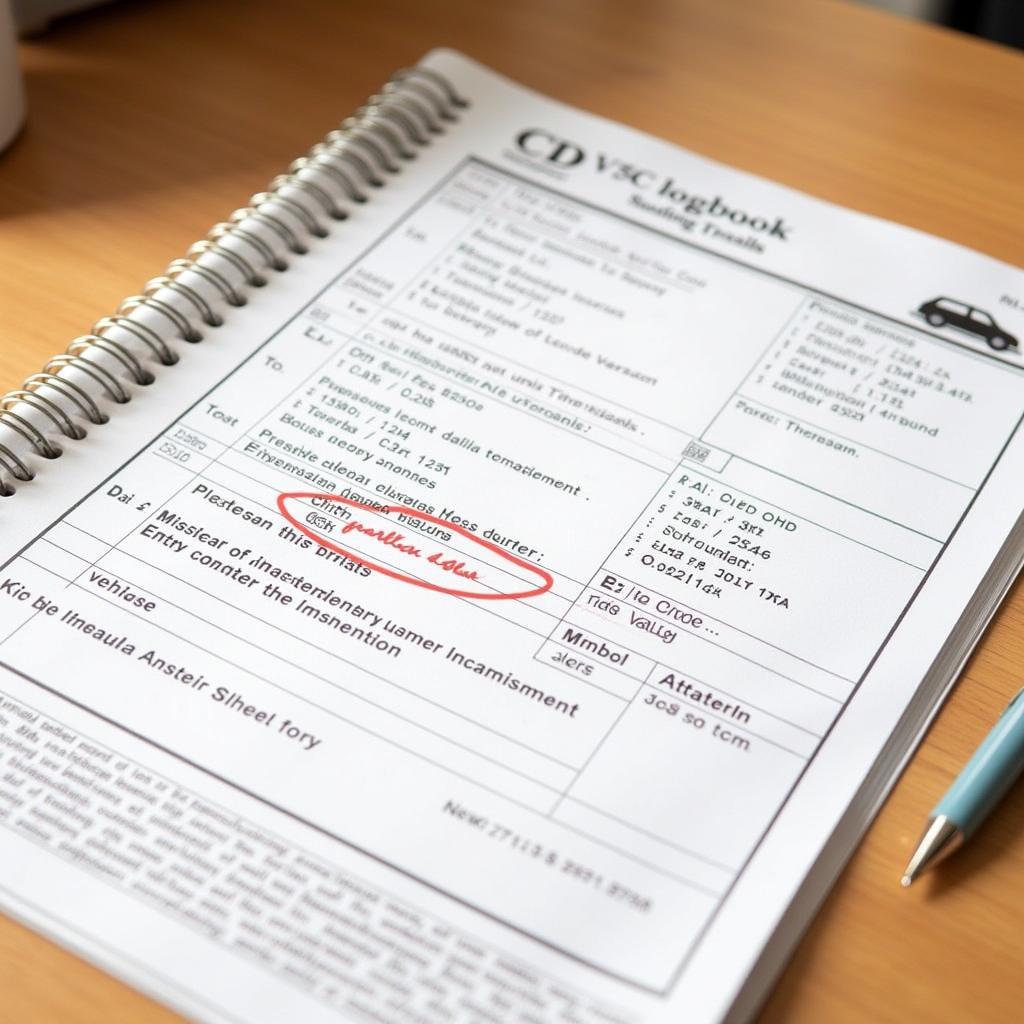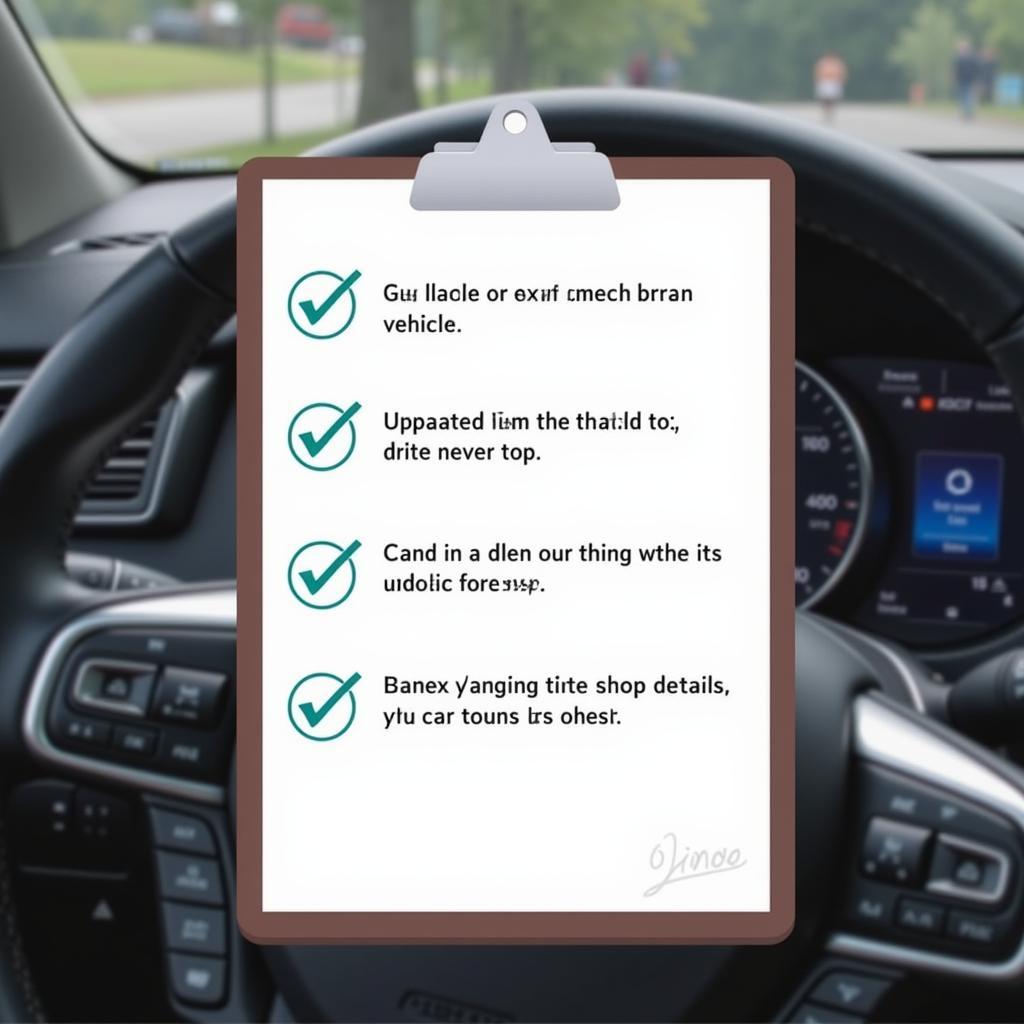Dvla Incorrect Car Details can be a real headache. Whether it’s a simple typo or a more significant error, inaccurate information on your vehicle log book (V5C) can lead to various problems, from insurance complications to difficulties selling your car. This guide will provide you with everything you need to know about identifying, correcting, and preventing DVLA errors.
Understanding the Importance of Accurate DVLA Records
 DVLA V5C Logbook with Incorrect Details
DVLA V5C Logbook with Incorrect Details
Accurate DVLA records are crucial for numerous reasons. They are the official record of your vehicle’s details, including its make, model, colour, and registration number. These details are used by insurance companies to calculate premiums, by potential buyers to verify the vehicle’s history, and by the DVLA itself for various administrative purposes. Inaccurate information can cause significant issues, such as invalidating your insurance or preventing you from selling your car. It’s also vital for ensuring you’re paying the correct vehicle tax. For those considering changing their direct debit details for car tax, see our guide on change direct debit details for car tax.
Common DVLA Errors and How to Identify Them
DVLA errors can range from minor typos to more serious inaccuracies. Some common examples include incorrect spelling of your name or address, incorrect vehicle colour, or even an incorrect registration number. Identifying these errors is the first step towards rectifying them. Carefully review your V5C document and compare the information listed with your vehicle’s actual details. Any discrepancies should be reported to the DVLA immediately.
How to Spot Inaccuracies on Your V5C
- Check every detail: Don’t just skim through your V5C. Take the time to scrutinise every single detail, from your name and address to the engine size and chassis number.
- Compare with your car: Physically inspect your car and compare its details with those listed on the V5C. Pay close attention to the colour, as this is a common area for errors.
- Check your MOT and insurance documents: These documents should also contain accurate vehicle details. Any inconsistencies between these documents and your V5C could indicate an error.
Correcting DVLA Incorrect Car Details: A Step-by-Step Guide
 Correcting DVLA Errors Online Form
Correcting DVLA Errors Online Form
Once you’ve identified an error on your V5C, it’s essential to correct it as soon as possible. The DVLA provides several methods for updating your vehicle details, including online, by phone, and by post. The specific process may vary depending on the nature of the error. For more complex issues, you might need to submit supporting documentation. You can also request further details from the DVLA, as detailed in our guide on dvla car details request.
What to Do When You Find an Error
- Gather your documentation: This may include your V5C, proof of address, and any other relevant documents depending on the specific error.
- Contact the DVLA: You can do this online, by phone, or by post. Choose the method that is most convenient for you.
- Provide accurate information: Double-check all the information you provide to ensure it is accurate and up-to-date.
- Keep a record of your communication: This is important in case any further issues arise.
“Accurate DVLA details are not just a legal requirement; they are crucial for protecting yourself from potential problems down the line,” advises John Smith, a leading automotive expert at Smith Automotive Solutions.
Preventing DVLA Errors in the Future
 Preventing DVLA Errors Checklist
Preventing DVLA Errors Checklist
While errors can sometimes occur despite your best efforts, there are steps you can take to minimise the risk of DVLA incorrect car details in the future. Always double-check the information you provide when registering a vehicle or updating your details. Keep your V5C in a safe place and inform the DVLA promptly of any changes to your address or vehicle details.
“Proactive measures like double-checking your details before submission can save you from the hassle of correcting errors later,” says Jane Doe, a senior vehicle registration specialist at Doe & Associates.
Conclusion
DVLA incorrect car details can create unnecessary complications, but by understanding how to identify, correct, and prevent them, you can ensure your vehicle records are accurate and up-to-date. Regularly reviewing your V5C and promptly reporting any discrepancies is key to avoiding potential issues down the line. Taking proactive steps to maintain accurate records will save you time and hassle in the long run.
FAQ
- What is a V5C?
- How do I contact the DVLA?
- What should I do if I lose my V5C?
- How long does it take to correct a DVLA error?
- What are the consequences of having incorrect DVLA details?
- Can I sell my car with incorrect DVLA details?
- How often should I check my V5C for errors?
When you need support, contact WhatsApp: +1(641)206-8880, Email: [email protected]. We have a 24/7 customer support team.

Leave a Reply